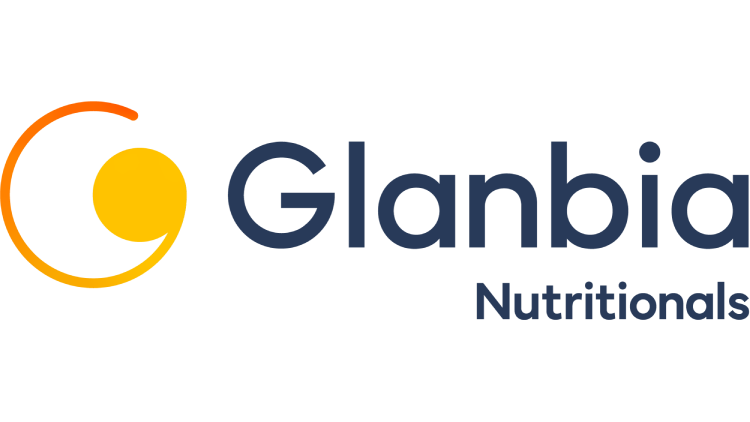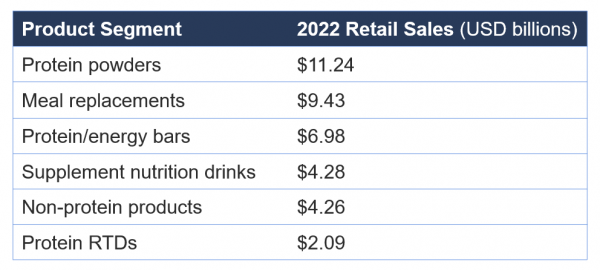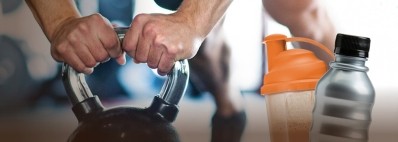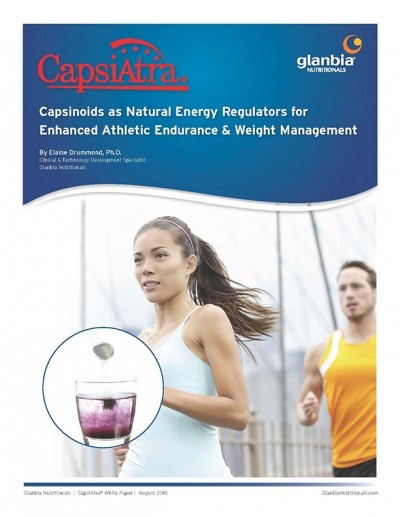Promotional Features
Nutritional support to enhance muscle growth and performance
The $38.2 billion global retail sports and active nutrition market is expected to reach $56.8 billion in 2027, growing at a forecast CAGR of around 7% with protein powders and protein/energy bars continuing to gain category share.1
In the US, where meal replacements are the top seller, bars and protein powders are growing at more than twice the rate of the other product segments and are forecast to surpass meal replacements in sales by 2027.1
Global sports and active nutrition market
Source: Euromonitor, World Sports Nutrition + Meal Replacement & Supplement Nutrition Drinks, September 2022
Although protein is at the core of the US sports performance consumer’s nutrition regimen, more than three in four (77%) say they actively seek out new products to enhance their workouts.2 Of these, 90% currently use pre-workout products, while 46% use intra-workout and 52% use post-workout products. 74% prefer workout beverages over ready-to-eat options such as bars.
Top nutritional ingredients for muscle growth and performance
As sports nutrition research advances, consumers are learning new insights into muscle recovery, growth, and strength, along with new ways they can optimize their workouts. Nutritional and functional ingredients play a major role in this. Here’s a look at some of the top ingredients for use in muscle support products.
Amino acids
As the building blocks of protein, amino acids provide the structural components of muscle tissue. Intake of the essential amino acids (EAA) – leucine, isoleucine, valine, histidine, lysine, methionine, phenylalanine, threonine, and tryptophan – is necessary to balance protein breakdown with protein synthesis during the post-workout period.3,4
Three EEAs – leucine, isoleucine, and valine – are metabolized mainly in skeletal muscle, rather than first passing through the liver. The three are known as branched-chain amino acids (BCAAs) and are linked with preventing muscle breakdown during vigorous exercise. Leucine plays a pivotal role in activating the protein synthesis process.5,6 Leucine contributes to improvements in body composition, strength, and physical function and has been reported to induce strength gains.7
Though not an EAA, citrulline is another beneficial amino acid, which the body converts to arginine to produce nitric oxide.
Nitric oxide
Nitric oxide is a molecule naturally produced in the body that can regulate blood flow through vasodilation. Vasodilation is the process whereby blood vessels relax and widen, increasing blood flow and nutrient delivery throughout the body, providing a positive effect on exercise performance.8,9 Supplements that can boost nitric oxide levels are sought by performance consumers looking to boost endurance and recovery.
IGF-1 Whey Fraction
IGF-1 (insulin-like growth factor-I) is a peptide hormone known to stimulate the anabolic pathway protein synthesis and inhibit muscle degradation. IGF-1 is critical to support bone growth and maintenance. It also activates satellite cells, which fuse with muscle fibers to lay down new myofibrils, the thread-like parts of muscles responsible for contraction.10,11
Glycerol
Glycerol is an ingredient used particularly by bodybuilders to increase the pumped look of their physique. Its strong water-binding ability (facilitated through hydrogen bonding) allows glycerol to hold extra water in the intracellular space.12 This temporary fluid accumulation makes muscles and blood vessels appear more prominent.
Hydrolyzed whey protein concentrate with functional enzymes
Hydrolyzed proteins, such as hydrolyzed whey protein concentrate, are proteins that have been broken down enzymatically, allowing for both faster absorption and metabolism. This leads to a quicker release of amino acids to support recovery and muscle building.
The addition of functional enzymes to a protein product can play a pivotal role in further assisting the breakdown of protein in the body. While enzymes play important roles in the various processes of the body, less than 40% of whey protein is broken down by digestive enzymes in the stomach. The inclusion of enzymes into a protein formulation helps to efficiently break down proteins and optimize the release of BCAAs. These enzymes also improve the poor digestion and difficulty associated with consuming large quantities of protein.
Bioactive ingredients that support muscle growth and performance
AminoBlast® EEAs and BCAAs are instantized amino acids that provided superior dispersibility and clarity compared to free amino acids. The composition of EAAs was designed to increase the availability of each EAA in proportion to its requirement to support the synthesis of muscle protein. A 6g dose of EAAs provides the requirements for optimal muscle protein synthesis.13
FitNox® is an all-natural, stimulant-free, 100% plant-based nitric oxide booster. It has been scientifically shown to increase nitric oxide (NO) levels up to 336% thereby promoting increased vasodilation and blood flow. It supports many of the components related to NO production and improved endurance by minimizing the factors that cause fatigue and limit performance.14
HydroMax® is the leader in a high-yield 65% glycerol powder. It is a proprietary blend of glycerol and silica, providing a shelf-stable glycerol powder at a much higher percentage of glycerol (65%) than glycerol monostearate (GMS). GMS becomes unstable over time as it absorbs water and therefore low concentrations (5-12%) are required to prevent degradation.
NXP-GF™ is a whey fraction isolate with guaranteed levels of IGF-1 to support muscle protein synthesis, help combat the effects of overtraining and support the immune system. NXP-GF was shown to lower TNF-α (an inflammatory protein marker) by 43% in an animal study, suggesting support for overtraining.15
PepForm® Leucine and Citrulline are soluble forms of leucine and citrulline that have been optimized through a process by which the amino acid is connected to a whey peptide backbone. This significantly improves the solubility and utilization of the amino acids. Peptides are more readily absorbed and have shown 70-80% higher absorption of amino acids compared to free-form amino acids.16,17
Hydrovon® EET is a hydrolyzed whey protein optimized with Embedded Enzyme Technology to promote the release of leucine. It provides a two-phase hydrolysis process. Phase one occurs during the production process where proteins are hydrolyzed up to 6% and then water activity is limited so that enzyme action is suspended. Phase two begins once the consumer adds water to protein powder which activates the enzymes for further protein hydrolysis.18
Including muscle support ingredients – beyond just protein – in sports nutrition products can help give consumers the extra muscle-building and performance benefits they’re looking for. As sports nutrition research progresses, so do consumer expectations.
References
1. Euromonitor, World Sports Nutrition + Meal Replacement & Supplement Nutrition Drinks, September 2022.
2. Glanbia Nutritionals Performance Nutrition U&A Survey, 2021.
3. Am J Physiol EndocrinolMetab 268: E514–E520, 1995.
4. J Appl Physiol 73: 1383–1388, 1992.
5. J. Nutr. 2000;130:139–145.
6. J. Nutr. 2000;130:2413–2419.
7. J Appl Physiol. 2003;94:651–659.
8. Van Faassen et al. Med Res Rev, 2009 Sep;29(5):683–741.
9. Bescos R et al., Sports Med. 2012 Feb 1;42(2):99-117.
10. Velloso C P. Br J Pharmacol. 2008 Jun;154(3):557-68.
11. Bone. 2015 Nov; 80:79-88.
12. J Hum Kinet. 2012 Oct; 34: 69–79.
13. Am J Physiol Endocrinol Metab 283: E648–E657, 2002.
14. Bescos R et al., Sports Med. 2012 Feb 1;42(2):99-117.
15. Glanbia Nutritionals Non-published Study.
16. J. Parent. Ent. Nutr. 13:382-386, 1989.
17. Poullain et al. 1989.
18. Glanbia Nutritionals Enzymatic hydrolysis study.





